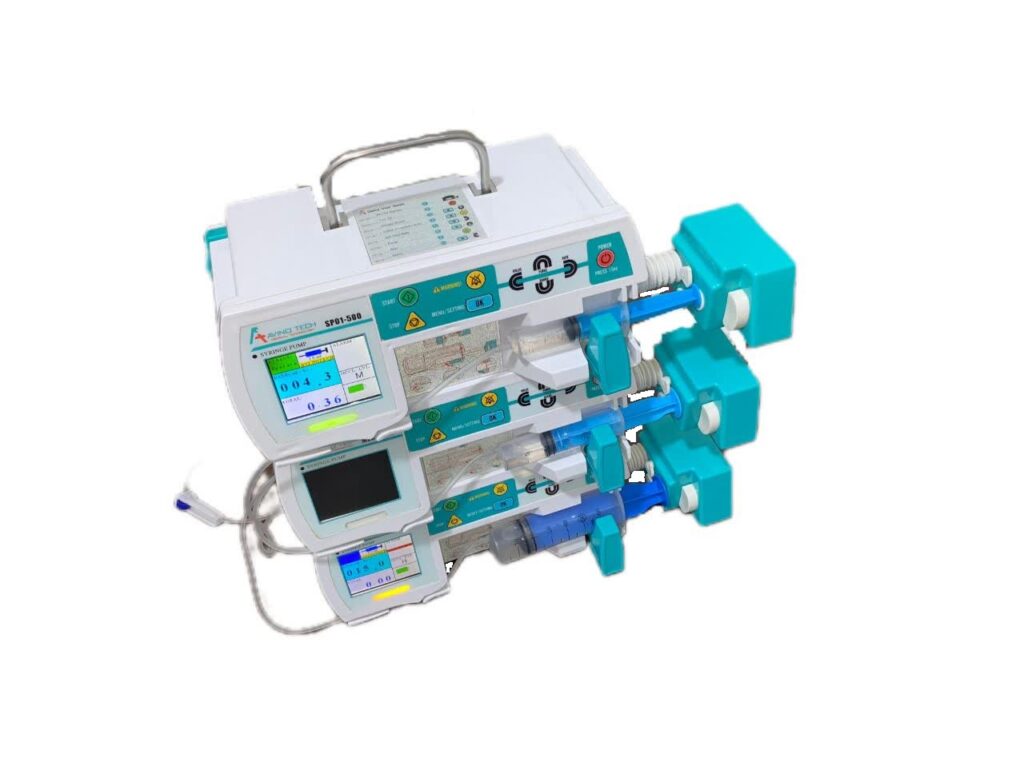
AVINOTECH Syringe Pump
Precision, Safety, and Reliability in Every Infusion
The AVINOTECH Syringe Pump is a state-of-the-art medical device designed for continuous and controlled infusion of medications in hospitalized patients. It is widely used in ICUs, operating rooms, and post-surgery care units where accurate control of infusion rate, volume, and duration is critical.
This intelligent device ensures precise delivery of cardiovascular drugs, antibiotics, chemotherapy agents, and neonatal nutrition or medication through accurate and steady infusion.
With its advanced pressure monitoring system, the pump prevents vein damage caused by overpressure and immediately alerts the operator through its smart alarm system if any irregularities occur in pressure, flow, or volume.
The AVINOTECH Syringe Pump is compatible with approved and standardized syringe types, ensuring reliable performance and eliminating risks associated with non-standard syringes.
Why Choose AVINOTECH Syringe Pump?
-
Designed according to international medical standards
-
Accurate and consistent performance in sensitive applications
-
Advanced safety and alarm features for patient protection
-
Compatible with a wide range of medical syringes
-
Ideal for hospitals, clinics, and critical care centers
✅ AVINOTECH Syringe Pump – the trusted choice for healthcare professionals who demand accuracy, safety, and innovation.